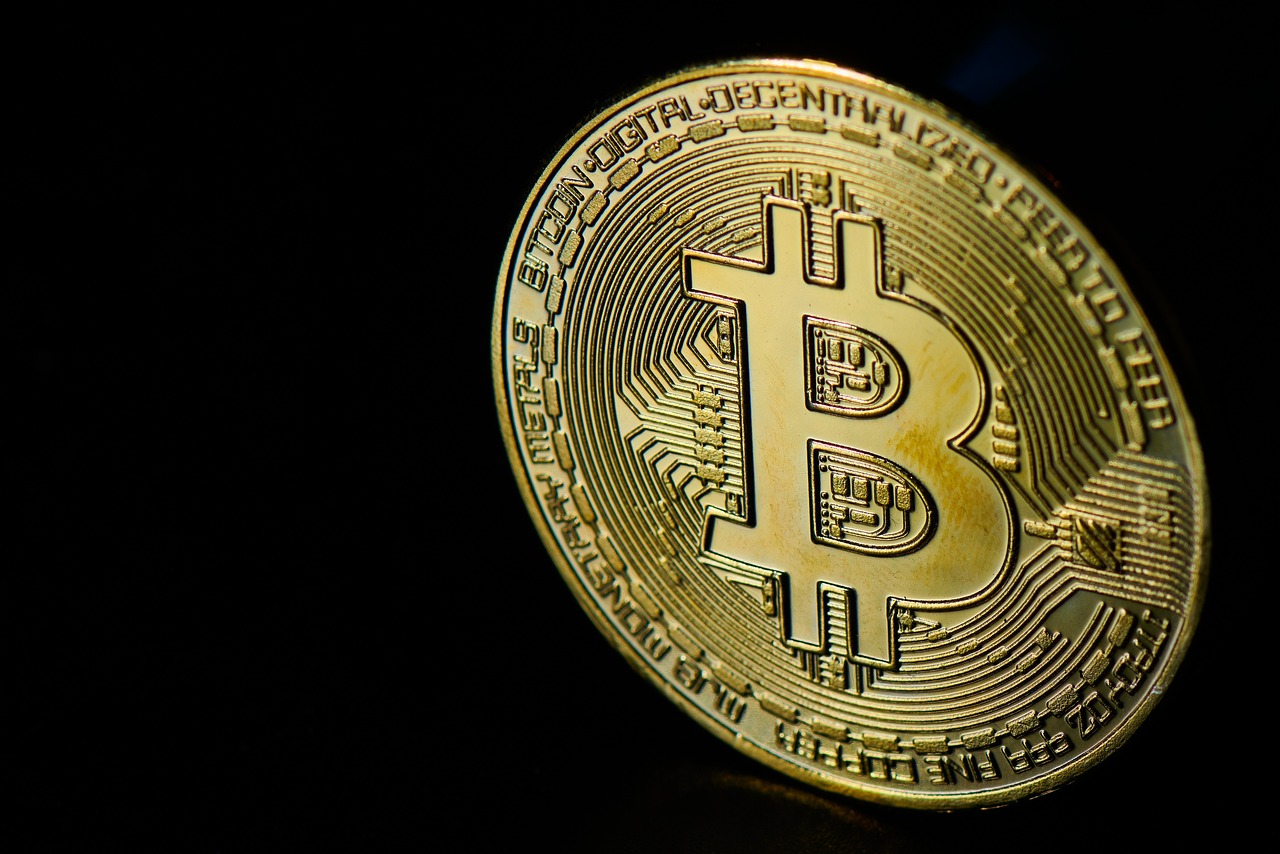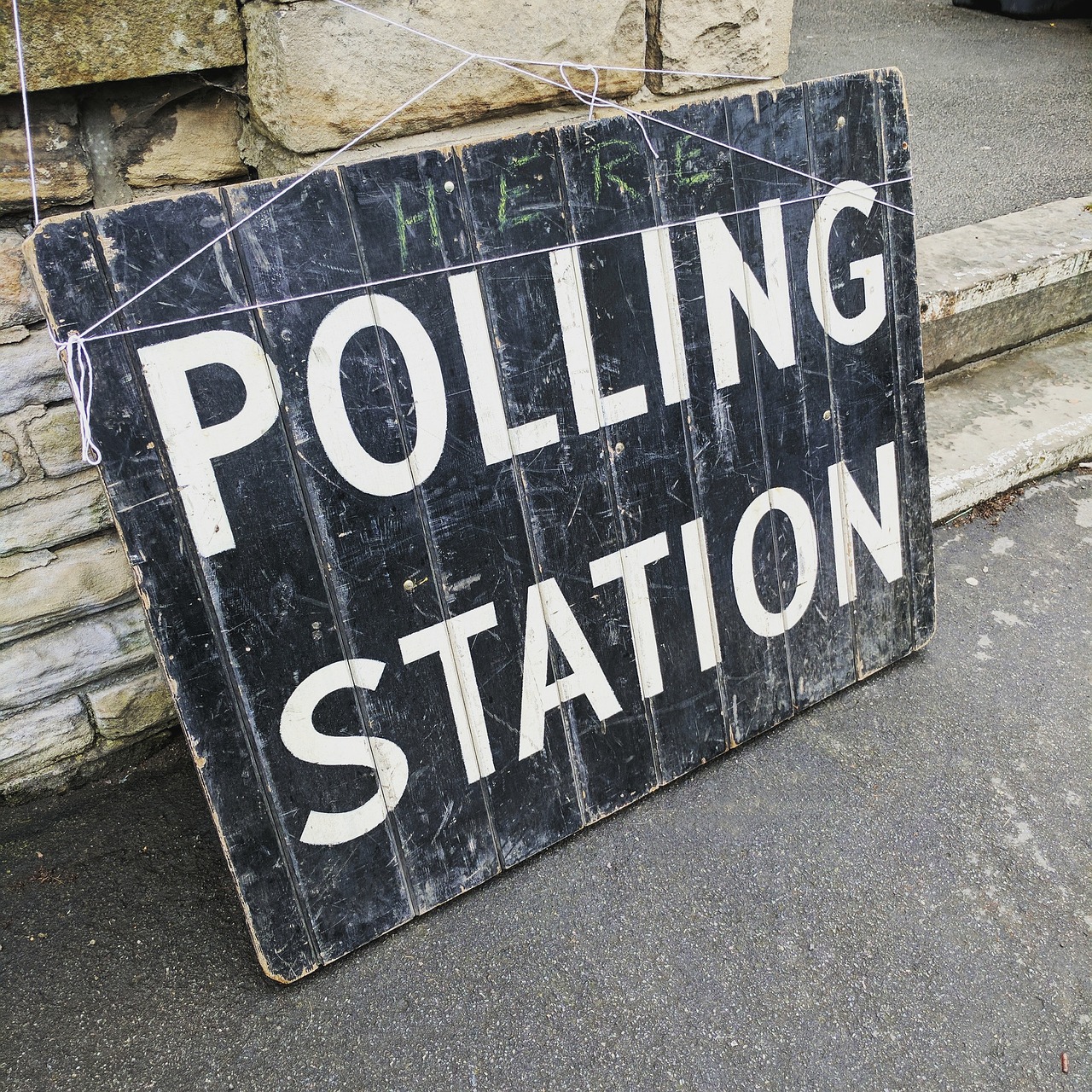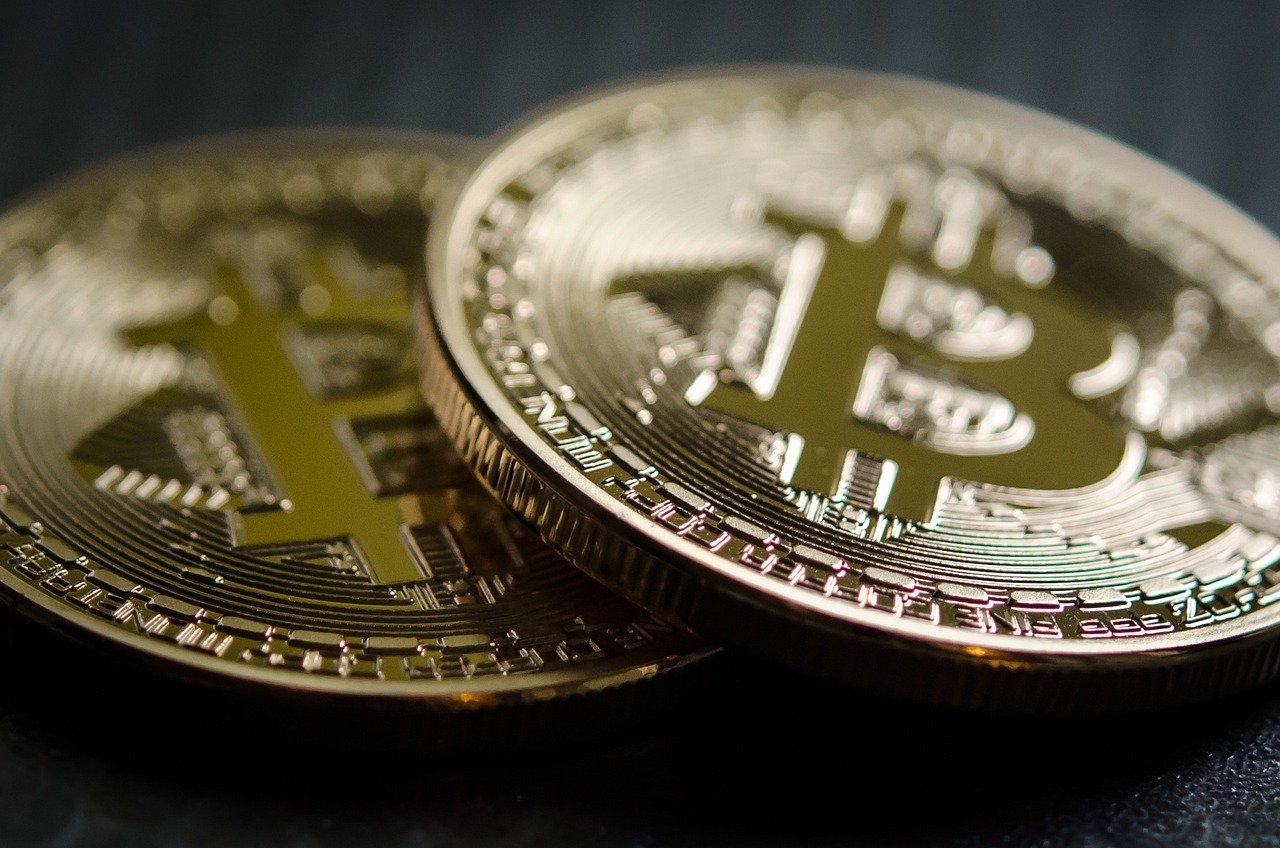The Future of Blockchain-Based Voting Systems
In today's digital age, where technology permeates every aspect of our lives, the concept of voting has remained largely unchanged for centuries. However, blockchain technology is poised to revolutionize the way we vote, making the process not only more secure but also more transparent and accessible. Imagine a world where you can cast your vote from the comfort of your home, knowing that your choice is recorded immutably and can be verified by anyone. This is not just a dream; it's a potential reality that blockchain can bring to the electoral process.
As we delve into the future of blockchain-based voting systems, we need to consider the profound implications this technology has for democracy itself. With increasing concerns about election integrity and voter fraud, the traditional voting methods are under scrutiny. Blockchain offers a solution that could enhance public trust in elections, ensuring that every vote counts and is counted correctly. But what does this mean for the average voter? How will it change the landscape of electoral participation? These are the questions we aim to explore in this article.
Blockchain, at its core, is a decentralized ledger technology that records transactions across multiple computers in such a way that the registered transactions cannot be altered retroactively. This feature alone is a game-changer for voting systems, where the integrity of the vote is paramount. By eliminating the need for a central authority, blockchain reduces the risk of manipulation and fraud. Each vote can be traced back to its origin while preserving the anonymity of the voter, creating a system that is both secure and private.
Furthermore, the potential for increased voter participation cannot be overlooked. With blockchain, the barriers to voting—such as long lines, complicated registration processes, and geographical limitations—could be significantly diminished. Imagine a scenario where citizens can vote using their smartphones, with the confidence that their votes are safe from tampering. This accessibility could lead to higher turnout rates, fostering a more engaged and representative democracy.
However, as with any emerging technology, there are challenges that must be addressed before blockchain voting can be widely adopted. Concerns about technological literacy, regulatory frameworks, and public skepticism are just a few hurdles that proponents of blockchain voting must navigate. Yet, the potential benefits far outweigh these challenges, making it imperative to explore and invest in this innovative approach to voting.
In conclusion, the future of blockchain-based voting systems is not just about technology; it’s about enhancing the democratic process. As we stand on the brink of this transformation, it’s essential to engage in discussions about how we can implement these systems effectively, ensuring that they serve the public's interest and uphold the principles of democracy. The journey towards a more secure and transparent voting system is just beginning, and it promises to reshape the way we think about elections.
- What is blockchain technology?
Blockchain is a decentralized ledger technology that securely records transactions across multiple computers, ensuring data integrity and security.
- How does blockchain improve voting systems?
It enhances transparency, reduces fraud, and increases voter confidence, which can lead to higher participation rates in elections.
- Are there any challenges to implementing blockchain voting?
Yes, challenges include technological barriers, regulatory concerns, and public skepticism regarding the reliability of new systems.
- Can blockchain ensure voter privacy?
Yes, blockchain uses encryption to safeguard voter identities while ensuring that votes remain traceable and verifiable.

Understanding Blockchain Technology
Blockchain technology is often hailed as a revolutionary force, not just in finance but across various sectors, including voting systems. At its core, a blockchain is a decentralized ledger that records transactions across multiple computers. This decentralization ensures that no single entity has control over the entire chain, making it inherently secure and resistant to tampering. Imagine it as a digital notebook that everyone can see and write in, but no one can erase or alter what has been recorded. This transparency is crucial for applications like voting, where trust and integrity are paramount.
To grasp the significance of blockchain, it’s essential to understand its fundamental principles. The technology operates through a series of blocks, each containing a list of transactions. Once a block is filled with data, it is linked to the previous block, forming a chain. This linkage is secured by cryptographic hashes, which act like digital fingerprints for each block. If someone attempts to alter a block, the hash changes, and the entire chain becomes invalid. This mechanism ensures that any attempt to tamper with the voting data can be easily detected.
Furthermore, the consensus mechanism is another critical component of blockchain technology. It ensures that all participants in the network agree on the validity of transactions before they are added to the blockchain. Different blockchain systems may use various consensus algorithms, such as Proof of Work or Proof of Stake, to validate transactions. For voting systems, having a reliable consensus mechanism is vital to prevent fraud and ensure that every legitimate vote is counted accurately.
In addition to security, blockchain technology offers other benefits that make it suitable for voting systems. For instance, it provides transparency by allowing anyone to verify the results independently. Voters can trace their votes through the blockchain, ensuring that their choices were recorded as intended. This level of transparency can significantly enhance voter confidence, which is often shaken by allegations of fraud or manipulation in traditional voting systems.
However, while the promise of blockchain is enticing, it is essential to recognize that the technology is not without challenges. The integration of blockchain into voting systems requires significant technological infrastructure and public buy-in. Additionally, issues such as regulatory compliance and the need for user-friendly interfaces must be addressed to ensure widespread adoption.
In summary, understanding blockchain technology is crucial for appreciating its potential to transform voting systems. By providing a secure, transparent, and decentralized platform, blockchain can address many of the issues plaguing traditional voting methods. As we move forward, the exploration of this technology will undoubtedly reveal new possibilities for enhancing democratic processes.

Benefits of Blockchain in Voting
When we think about the voting process, the words transparency, security, and trust often come to mind. Blockchain technology has the potential to enhance these aspects significantly in the realm of elections. Imagine a world where every vote is not only counted but also verifiable by anyone, anywhere. This is the promise that blockchain holds for voting systems. By utilizing a decentralized ledger, blockchain ensures that each vote is recorded in a manner that is nearly impossible to tamper with, thus building a robust foundation for electoral integrity.
One of the most compelling benefits of blockchain in voting is its ability to reduce fraud. Traditional voting systems, whether electronic or paper-based, have vulnerabilities that can be exploited. With blockchain, each vote is encrypted and linked to the previous vote, creating a chain that is secure and immutable. This means that once a vote is cast, it cannot be altered, providing a sense of security that is often lacking in conventional systems. This enhanced security can lead to improved voter confidence, which is crucial for encouraging higher participation rates during elections.
Moreover, the transparency offered by blockchain can transform the electoral process. Voters can verify their votes without compromising their privacy, thanks to advanced encryption techniques. This feature not only reassures voters that their selections are counted but also allows for independent audits of the voting process. The result? A more engaged electorate, as voters feel their participation is meaningful and their voices are genuinely heard.
In addition to transparency and security, blockchain voting systems can also improve accessibility. Many potential voters face barriers when trying to participate in elections—whether due to physical disabilities, geographical constraints, or simply the complexities of the voting process. Blockchain can facilitate remote voting options that are secure and user-friendly. For instance, overseas voters or those with mobility issues can cast their votes from the comfort of their homes, ensuring that everyone has a chance to participate in democracy.
To summarize, the benefits of implementing blockchain in voting systems are substantial. Here’s a quick look at the key advantages:
- Enhanced Transparency: Every vote is recorded on a public ledger, allowing for independent verification.
- Increased Security: Advanced encryption and tamper-proof features protect the integrity of the voting process.
- Reduced Fraud: The immutable nature of blockchain makes it extremely difficult to alter or manipulate votes.
- Improved Voter Confidence: Knowing that their votes are secure can encourage more citizens to participate in elections.
- Greater Accessibility: Remote and mobile voting options can increase participation among underrepresented groups.
As we move forward, the integration of blockchain technology in voting systems could very well be the key to revitalizing democracy. By addressing the long-standing issues of security, transparency, and accessibility, we can create a voting process that is not only more efficient but also more trustworthy. The future of voting may just be a block away!
Q1: What is blockchain technology?
A1: Blockchain is a decentralized digital ledger that records transactions across many computers in a way that ensures the registered transactions cannot be altered retroactively. This technology is the backbone of cryptocurrencies and has applications in various sectors, including voting.
Q2: How does blockchain improve the security of voting?
A2: Blockchain enhances security through its decentralized nature, encryption methods, and immutable records, which protect against tampering and unauthorized access.
Q3: Can blockchain voting systems be hacked?
A3: While no system is entirely immune to hacking, the decentralized and encrypted nature of blockchain makes it significantly more difficult to compromise compared to traditional voting systems.
Q4: What are the challenges of implementing blockchain voting?
A4: Challenges include technological barriers, regulatory concerns, and public skepticism about the reliability and effectiveness of new systems.
Q5: Are there any real-world examples of blockchain voting?
A5: Yes, notable examples include Estonia's digital voting system and the Voatz platform used in U.S. elections, both of which have successfully implemented blockchain technology to enhance the voting process.

Enhanced Security Measures
When it comes to voting, security is not just a feature; it’s the backbone of the entire process. Imagine casting your vote in a system that feels as secure as a bank vault—this is where blockchain technology shines. By utilizing a decentralized network, blockchain dramatically reduces the risks associated with traditional voting methods. Each vote cast is recorded on a public ledger that is immutable, meaning once it's in the system, it cannot be altered or deleted. This characteristic is akin to having a digital fingerprint for each vote, ensuring that every action is traceable and verifiable.
One of the most compelling aspects of blockchain security is its encryption capabilities. Encryption serves as a protective layer around voter data, ensuring that personal information remains confidential. Only authorized parties can access specific data, thereby maintaining the integrity of the voting process. This is crucial because it builds trust among voters, who can feel confident that their identities are protected while still being able to verify their votes. Imagine being able to check your bank statement online—this is similar to how voters can confirm their votes without compromising their privacy.
Moreover, the decentralized nature of blockchain means that there is no single point of failure. In traditional voting systems, a cyber-attack on a central server could jeopardize the entire election. However, with blockchain, the data is distributed across multiple nodes, making it incredibly resilient against such attacks. If one node is compromised, the others remain intact, ensuring that the electoral process continues smoothly. This decentralization acts like a safety net, catching potential threats before they can cause significant damage.
To further illustrate the security features of blockchain voting systems, consider the following table:
| Security Feature | Description |
|---|---|
| Decentralization | Distributes data across multiple nodes, reducing single points of failure. |
| Encryption | Protects voter identities and ensures data confidentiality. |
| Immutable Ledger | Records votes in a way that prevents alteration or deletion. |
| Traceability | Allows votes to be verified without compromising voter privacy. |
In conclusion, enhanced security measures offered by blockchain technology not only protect the voting process from fraud and tampering but also create a more trustworthy environment for voters. As we move towards a more digital society, the importance of these measures cannot be overstated. With blockchain, we have the potential to transform voting into a secure, transparent, and accessible process, ensuring that every voice is heard and counted.
- What is blockchain technology?
Blockchain is a decentralized digital ledger that records transactions across many computers in a way that the registered information cannot be altered retroactively. - How does blockchain enhance voting security?
It uses encryption, decentralization, and an immutable ledger to protect against tampering and unauthorized access. - Can voters verify their votes in a blockchain system?
Yes, blockchain allows voters to verify their votes while maintaining their privacy through secure encryption methods. - What are the challenges of implementing blockchain voting?
Technological barriers, regulatory concerns, and public skepticism are some of the challenges faced.

Decentralization and Its Impact
Decentralization is one of the most powerful features of blockchain technology, and its impact on voting systems cannot be overstated. Imagine a world where no single entity holds the power to alter or manipulate the outcome of an election. This is the promise that decentralization brings to the table. By distributing control across a network of nodes, blockchain voting systems eliminate the risk associated with centralized databases, which are often vulnerable to hacking and fraud.
In traditional voting systems, a central authority manages the entire electoral process, from voter registration to ballot counting. This centralization can lead to numerous issues, including corruption, mismanagement, and even election fraud. With blockchain, however, each vote is recorded on a decentralized ledger, making it nearly impossible for anyone to tamper with the results without the consensus of the entire network. This is akin to having multiple witnesses to an event; if one person tries to alter the story, the others can easily refute it.
Furthermore, decentralization enhances the resilience of the electoral process. In a conventional system, if a central server goes down or is attacked, the entire voting process can be compromised. However, in a decentralized network, even if some nodes are compromised, the remaining nodes continue to function, ensuring that the voting process remains intact. This redundancy is crucial, especially in high-stakes elections where every vote counts. To illustrate this point, consider the following table:
| Centralized System | Decentralized System |
|---|---|
| Single point of failure | Multiple nodes ensure redundancy |
| Higher risk of fraud | Enhanced security through consensus |
| Voter disenfranchisement risk | Increased accessibility and trust |
This table highlights the stark differences between centralized and decentralized systems. The decentralization of voting not only enhances security but also fosters greater voter confidence. When people know that their votes are part of a transparent and tamper-proof system, they are more likely to participate in elections. This increased participation can lead to a more representative democracy, where the voices of all citizens are heard and valued.
However, it’s essential to acknowledge that decentralization is not a panacea. The implementation of a decentralized voting system requires a robust infrastructure and a commitment to maintaining the integrity of the network. There are challenges to overcome, such as ensuring that all nodes in the network are trustworthy and capable of maintaining the system's security. Nonetheless, the potential benefits of decentralization in voting systems far outweigh the challenges, making it a critical component of the future of democratic processes.
- What is decentralization in blockchain voting? Decentralization in blockchain voting refers to the distribution of control across multiple nodes instead of relying on a single central authority, enhancing security and reducing the risk of fraud.
- How does decentralization improve voter confidence? By ensuring that votes are recorded on a tamper-proof ledger, decentralization fosters trust in the electoral process, encouraging higher voter participation.
- What challenges do decentralized voting systems face? Challenges include ensuring the integrity of all nodes in the network, addressing technological barriers, and overcoming public skepticism about new systems.

Encryption and Voter Privacy
In the digital age, where data breaches and privacy concerns are rampant, encryption emerges as a crucial player in safeguarding voter identities. Imagine casting your vote as if you're sealing a letter in an envelope, ensuring that only the intended recipient can read its contents. This analogy illustrates how encryption works in the realm of blockchain-based voting systems. By encoding voter information, encryption ensures that even if someone intercepts the data, they wouldn't be able to decipher it without the proper keys. This not only protects the privacy of the voter but also enhances the overall integrity of the electoral process.
Moreover, encryption plays a dual role in maintaining voter privacy while ensuring that each vote is traceable and verifiable. Once a vote is cast, it is transformed into a unique digital fingerprint that is recorded on the blockchain. This fingerprint is encrypted, making it impossible for unauthorized parties to link it back to the individual voter. Voter anonymity is thus preserved, allowing individuals to participate in elections without fear of repercussions or exposure.
To further illustrate the importance of encryption in voting, consider the following key points:
- Data Integrity: Encryption helps maintain the integrity of the vote, ensuring that it cannot be altered or tampered with after being cast.
- Access Control: Only authorized personnel can access the decryption keys, which means that only trusted entities can verify the votes.
- Voter Confidence: Knowing that their votes are encrypted and secure increases voter confidence, which can lead to higher turnout rates.
However, while encryption provides robust security measures, it is not without its challenges. The complexity of encryption algorithms can sometimes lead to concerns about usability, especially for those who may not be tech-savvy. Additionally, the need for secure key management systems is paramount; if the keys are lost or compromised, the entire voting process could be jeopardized. Therefore, as we advance towards a more digital voting landscape, it's essential that we address these challenges while leveraging the benefits that encryption offers.
- What is encryption in the context of blockchain voting? Encryption is the process of converting voter data into a code to prevent unauthorized access, ensuring voter privacy and data integrity.
- How does encryption protect voter anonymity? By encrypting votes, it becomes impossible to link a vote back to the individual voter, thereby preserving anonymity.
- Are there any risks associated with encryption in voting systems? Yes, if encryption keys are lost or compromised, it can lead to serious security vulnerabilities.

Challenges to Implementation
As promising as blockchain technology may be for revolutionizing voting systems, it’s not without its challenges. Implementing blockchain-based voting systems involves navigating a complex landscape filled with technological barriers, regulatory hurdles, and public skepticism. These obstacles can significantly affect the adoption and trust in such systems. So, what are the primary challenges that stand in the way of this innovative voting approach?
Firstly, one of the most significant hurdles is the technological barrier. Developing a robust blockchain voting system requires a deep understanding of both blockchain technology and the electoral process. Many jurisdictions may lack the technical expertise needed to design, implement, and maintain such systems. Additionally, integrating blockchain with existing voting infrastructure can be a daunting task. It’s like trying to fit a square peg into a round hole—there’s a need for compatibility between old systems and new technology.
Moreover, there are regulatory concerns that must be addressed. Voting is a highly regulated activity, and any new system must comply with existing laws and regulations. This can involve extensive legal reviews and adjustments to ensure that blockchain voting meets the necessary legal standards. Given the varying regulations across different states and countries, achieving consensus on a standardized approach can be like herding cats—challenging and often frustrating.
Public skepticism also plays a significant role in the challenges faced by blockchain voting systems. Many people are understandably cautious about adopting new technologies, especially when it comes to something as crucial as voting. Concerns about the reliability of blockchain technology, potential hacking threats, and the fear of disenfranchisement can lead to resistance among voters. It’s essential to build public trust through education and transparency, but this takes time and effort.
To add to the complexity, there are also concerns regarding the digital divide. Not everyone has equal access to the internet or the necessary technology to participate in a blockchain voting system. This disparity can disenfranchise vulnerable populations, including the elderly, low-income individuals, and those living in rural areas. Ensuring that blockchain voting is accessible to everyone is crucial for maintaining democratic integrity.
In summary, while blockchain technology holds immense potential for enhancing voting systems, the journey to implementation is fraught with challenges. Addressing technological barriers, regulatory concerns, public skepticism, and accessibility issues will be vital for the successful adoption of blockchain in voting. The road may be bumpy, but with careful planning and execution, we may one day see a world where voting is more secure, transparent, and accessible to all.
- What are the main benefits of blockchain voting systems? Blockchain voting systems offer increased transparency, enhanced security, and improved voter confidence.
- How does blockchain ensure the integrity of votes? Blockchain uses a decentralized ledger that records every vote in a secure and tamper-proof manner.
- Are there any real-world examples of blockchain voting? Yes, notable examples include Estonia's digital voting system and the Voatz platform used in U.S. elections.
- What challenges do blockchain voting systems face? Key challenges include technological barriers, regulatory concerns, public skepticism, and issues related to accessibility.

Case Studies of Blockchain Voting
As we delve into the practical applications of blockchain technology in voting systems, it's essential to look at real-world examples that illustrate its potential. These case studies not only highlight the successes but also the challenges faced during implementation. Let's explore two notable instances: Estonia's groundbreaking digital voting system and the Voatz platform used in U.S. elections.
Estonia has become a beacon of innovation in the realm of digital governance, particularly with its e-voting system. Launched in 2005, this pioneering approach allows citizens to cast their votes online, significantly increasing accessibility and convenience. The backbone of this system is blockchain technology, which ensures that each vote is recorded securely and transparently. One of the most remarkable aspects of Estonia's system is its ability to maintain voter anonymity while ensuring that each vote can be verified. This dual focus on privacy and transparency has proven to be a game-changer, fostering trust among the electorate.
In the 2019 parliamentary elections, approximately 44% of voters chose to vote online, demonstrating the system's acceptance and effectiveness. The use of blockchain has not only streamlined the voting process but has also reduced the costs associated with traditional voting methods. This success story serves as a powerful example of how blockchain can enhance democratic participation and efficiency.
Another compelling case study is the Voatz platform, which has facilitated secure mobile voting in various U.S. elections. Designed with accessibility in mind, Voatz aims to empower voters who might face challenges in traditional voting scenarios, such as military personnel stationed overseas or individuals with disabilities. By leveraging blockchain technology, Voatz ensures that each vote is encrypted and securely stored, minimizing the risk of fraud and tampering.
During the 2020 elections, Voatz was used in several jurisdictions, allowing more than 30,000 voters to cast their ballots remotely. The platform's user-friendly interface and robust security features garnered positive feedback, showcasing the potential for mobile voting to increase participation rates among demographics that are often underrepresented in elections. However, it also faced scrutiny regarding concerns over cybersecurity and the integrity of the voting process.
Both Estonia's e-voting system and the Voatz platform illustrate the transformative potential of blockchain technology in voting. They highlight the importance of not only implementing innovative solutions but also addressing the challenges and concerns that come with them. As we look to the future, these case studies provide valuable insights into how blockchain can reshape the electoral landscape.
- What is blockchain voting? Blockchain voting refers to the use of blockchain technology to facilitate secure, transparent, and tamper-proof voting processes.
- How does blockchain enhance voting security? Blockchain enhances voting security through decentralized storage, encryption, and the ability to trace and verify votes without compromising voter anonymity.
- Are there any risks associated with blockchain voting? Yes, potential risks include cybersecurity threats, technological barriers, and public skepticism about the reliability of new systems.
- What are the benefits of blockchain voting? Benefits include increased transparency, reduced fraud, improved voter confidence, and higher participation rates in elections.

Estonia's Digital Voting System
Estonia has emerged as a trailblazer in the realm of digital governance, and its digital voting system is a shining example of how technology can enhance democratic processes. Launched in 2005, Estonia's e-voting system allows citizens to cast their votes securely and conveniently from anywhere in the world using their electronic ID cards. This innovative approach not only reflects the country's commitment to digital transformation but also sets a precedent for other nations aiming to modernize their electoral processes.
One of the most remarkable features of Estonia's digital voting system is its use of blockchain technology. By leveraging this decentralized ledger, Estonia ensures that each vote is recorded with utmost integrity and transparency. The blockchain serves as a tamper-proof record of votes, making it nearly impossible for any malicious actor to alter the results. This level of security is crucial in a time when concerns about election integrity are at an all-time high.
But how does it all work? When an Estonian citizen wants to vote, they log into the e-voting platform using their electronic ID. This platform is built on a secure infrastructure that utilizes advanced encryption methods to protect voter identities. Once logged in, voters can select their preferred candidates and submit their votes, all while knowing that their choices are securely stored on the blockchain. This seamless experience not only simplifies the voting process but also encourages higher participation rates, as it eliminates the barriers associated with traditional voting methods.
Moreover, Estonia's digital voting system has been designed with accessibility in mind. It allows citizens living abroad, including those serving in the military, to exercise their right to vote without the need to return home physically. This inclusivity is a significant step forward, as it empowers citizens regardless of their location. In fact, during the 2019 parliamentary elections, approximately 44% of voters opted for e-voting, showcasing the system's popularity and effectiveness.
In addition to enhancing accessibility and security, Estonia's e-voting system has also sparked interest globally. Many countries are now looking to Estonia as a model for implementing similar systems. However, it's essential to remember that while the technology is impressive, it also comes with challenges. Issues such as public trust, cybersecurity threats, and the need for robust legal frameworks must be addressed to ensure the success of digital voting systems worldwide.
In conclusion, Estonia's digital voting system represents a revolutionary leap in how elections can be conducted in the digital age. By harnessing the power of blockchain technology, the country has not only improved the voting experience for its citizens but has also set a benchmark for others to follow. As we look to the future, Estonia's example may very well guide the way for a more secure, transparent, and accessible electoral process globally.
- How does Estonia's e-voting system ensure voter privacy?
Estonia uses advanced encryption techniques to protect voter identities while ensuring that votes can be traced and verified. - Can citizens vote from abroad?
Yes, Estonian citizens living abroad can vote securely online using their electronic ID cards. - What percentage of voters used e-voting in the last elections?
Approximately 44% of voters opted for e-voting during the 2019 parliamentary elections.

Voatz and U.S. Elections
The integration of technology into voting systems has been a hot topic in recent years, and one of the most intriguing players in this space is Voatz. This platform has emerged as a beacon of hope for enhancing voter accessibility, especially for those who find it challenging to vote in traditional ways. Think about it: how many times have you heard stories of military personnel stationed overseas or individuals with disabilities struggling to cast their votes? Voatz aims to change that narrative.
Voatz utilizes blockchain technology to facilitate secure mobile voting, allowing voters to cast their ballots using their smartphones. This innovative approach not only simplifies the voting process but also ensures that each vote is securely recorded and verifiable. Imagine being able to vote from anywhere in the world, with the same level of security and integrity as traditional voting methods. It’s like having a digital key to democracy at your fingertips!
The platform has been tested in various elections across the United States, including municipal and state elections. For instance, in the 2020 elections, Voatz was utilized in West Virginia to enable overseas voters to participate in the electoral process. This was a significant step forward, demonstrating how technology can bridge the gap between voters and the democratic process, especially in times of crisis, such as during the COVID-19 pandemic.
However, it's essential to acknowledge the concerns surrounding the use of mobile voting platforms like Voatz. Critics often raise questions about security, privacy, and the potential for hacking. To address these concerns, Voatz employs several robust security measures:
- Blockchain Technology: Ensures that all votes are recorded in a tamper-proof manner.
- Biometric Authentication: Voters must verify their identity using biometric data, such as facial recognition or fingerprints.
- End-to-End Encryption: Protects voter data during transmission, ensuring that it remains confidential.
Despite these advancements, public skepticism remains a hurdle. Many voters are still wary of using technology for something as crucial as voting. To overcome this, Voatz and similar platforms must focus on building trust through transparency and education. Providing clear information about how the technology works and how votes are secured can help alleviate fears and encourage wider adoption.
As we look to the future, the potential for Voatz and other blockchain-based voting systems is immense. They could not only enhance accessibility but also increase voter participation rates. Imagine a future where every eligible voter can easily cast their vote, regardless of their location or circumstances. That’s the kind of democratic engagement that we should strive for!
In conclusion, Voatz represents a significant step towards modernizing the electoral process in the United States. By leveraging blockchain technology, it has the potential to make voting more accessible and secure. However, as with any new technology, the journey is just beginning, and it will require ongoing dialogue, testing, and refinement to ensure that it meets the needs of all voters.
Q: What is Voatz?
A: Voatz is a mobile voting platform that utilizes blockchain technology to enable secure and accessible voting, particularly for overseas voters and individuals with disabilities.
Q: How does Voatz ensure the security of votes?
A: Voatz employs blockchain technology, biometric authentication, and end-to-end encryption to ensure that votes are securely recorded and protected from tampering.
Q: Can anyone use Voatz to vote?
A: Currently, Voatz is used primarily for specific elections, particularly for overseas voters and certain individuals with disabilities. Its availability may vary depending on the election and jurisdiction.
Q: What are the main concerns regarding Voatz?
A: Some concerns include potential security vulnerabilities, privacy issues, and public skepticism about the reliability of mobile voting systems.

Future Trends and Innovations
The landscape of voting systems is on the brink of a technological revolution, driven by the transformative potential of blockchain technology. As we look to the future, several key trends and innovations are emerging that promise to reshape how we conduct elections. Imagine a world where voting is not only secure but also as easy as sending a text message! This is the vision that blockchain holds, and it’s closer than you might think.
One of the most exciting prospects is the integration of artificial intelligence (AI) with blockchain voting systems. AI can analyze vast amounts of data in real-time, identifying patterns and anomalies that may indicate fraud or irregularities. By combining AI’s analytical capabilities with blockchain’s immutable ledger, we can create a system that not only records votes but also actively monitors the integrity of the electoral process. For instance, AI could flag suspicious voting patterns, prompting immediate investigation and ensuring that every vote counts fairly.
Moreover, the rise of mobile voting applications is set to enhance accessibility. With more people relying on smartphones for daily tasks, including banking and shopping, why not extend this convenience to voting? Blockchain-based mobile voting platforms can empower citizens to cast their votes securely from anywhere in the world. This is particularly beneficial for overseas voters and individuals with disabilities who may face challenges accessing traditional polling places. Imagine being able to participate in your country’s democracy while sitting in a café miles away from home!
Another trend to watch is the development of smart contracts within voting systems. Smart contracts are self-executing contracts with the terms of the agreement directly written into code. In the context of voting, these contracts could automate various processes, such as verifying voter eligibility and ensuring that votes are counted accurately. This not only streamlines the voting process but also reduces the risk of human error and manipulation. For example, a smart contract could automatically validate a voter’s identity and eligibility before allowing them to cast their ballot, ensuring a seamless and secure experience.
As we embrace these innovations, it’s essential to consider the importance of education and public outreach. For blockchain voting systems to gain widespread acceptance, voters must understand how they work and the benefits they offer. Educational campaigns that demystify blockchain technology and its application in voting can help alleviate concerns and build trust among the electorate. Imagine a future where citizens are not only voters but also informed participants in the electoral process, equipped with the knowledge to make educated decisions about the systems that govern them.
Lastly, the integration of biometric authentication could further enhance the security of blockchain voting systems. Utilizing fingerprints, facial recognition, or retinal scans can provide an additional layer of verification, ensuring that only eligible voters can participate. This technology, when combined with blockchain’s inherent security features, could significantly reduce the risk of identity theft and fraudulent voting. Picture a voting experience where your identity is verified in seconds, allowing you to focus on what truly matters—making your voice heard!
In conclusion, the future of blockchain-based voting systems is not just a dream; it's becoming a reality. With innovations like AI integration, mobile applications, smart contracts, public education, and biometric authentication, we are on the cusp of a new era in democratic participation. As we move forward, it’s crucial to remain vigilant about the challenges that may arise, ensuring that these technologies are implemented responsibly and ethically. The goal is to create a voting system that is not only secure and transparent but also inclusive and accessible for all.
- What is blockchain voting? Blockchain voting utilizes blockchain technology to securely record and verify votes, ensuring transparency and reducing the risk of fraud.
- How does blockchain enhance security in voting? Blockchain provides an immutable ledger, making it nearly impossible to alter votes once they are recorded, thus enhancing security.
- Can blockchain voting be accessed on mobile devices? Yes, mobile voting applications can be developed using blockchain technology to allow secure voting from smartphones.
- What are smart contracts in voting? Smart contracts are self-executing agreements that can automate processes in voting, such as verifying voter eligibility.
- How can public education improve blockchain voting systems? Educating the public about blockchain technology can build trust and encourage participation in new voting systems.
Frequently Asked Questions
- What is blockchain technology and how does it work in voting systems?
Blockchain technology is essentially a decentralized digital ledger that records transactions across many computers. In voting systems, it ensures that each vote is securely stored and cannot be altered or deleted. This means that once a vote is cast, it becomes part of an immutable chain, providing transparency and trust in the electoral process.
- What are the main benefits of using blockchain for voting?
There are several exciting benefits to using blockchain for voting, including enhanced security against fraud, increased transparency that allows voters to verify their votes, and improved accessibility for those who may have difficulty voting in traditional ways. All these factors can contribute to higher voter confidence and participation.
- How does blockchain enhance security in voting?
Blockchain enhances security through its decentralized nature, meaning there's no single point of failure that can be attacked. Additionally, it uses advanced encryption techniques to protect voter identities and ensure that votes are both traceable and verifiable, which significantly reduces the chances of tampering or cyber threats.
- What challenges do blockchain voting systems face?
While the potential is huge, there are challenges to overcome, such as technological barriers, regulatory hurdles, and public skepticism. Many people are still unsure about the reliability of new systems, making it crucial for stakeholders to educate the public and demonstrate the effectiveness of blockchain in real-world scenarios.
- Can you provide examples of blockchain voting in action?
Absolutely! One notable example is Estonia, which has implemented a digital voting system using blockchain technology. This pioneering approach has set a global standard for secure elections. Another example is the Voatz platform used in some U.S. elections, which facilitates secure mobile voting, especially for overseas voters and individuals with disabilities.
- What does the future hold for blockchain voting technology?
The future looks bright for blockchain voting! We can expect continuous innovations, such as integrations with other technologies like artificial intelligence, which could further enhance security and accessibility. As more successful case studies emerge, the adoption of this technology in democratic processes is likely to grow.



















